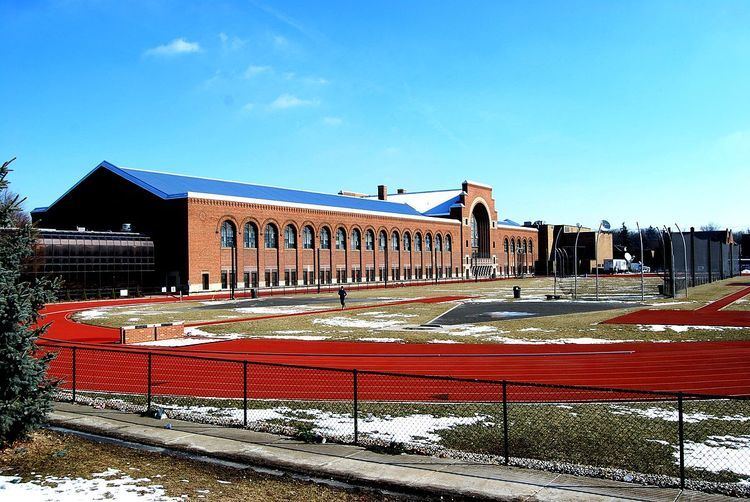Broke ground 1906 Opened 6 October 1906 | Surface Turf Address Ann Arbor, MI 48104, USA | |
 | ||
Capacity List18,000 (1906–13)21,000 (1914–20)42,000 (1921–25)46,000 (1926–) Similar University of Michigan, Ray Fisher Stadium, Yost Ice Arena, Crisler Center, Lurie Tower | ||
Sfwbl history will be made ferry field
Ferry Field is a multi-purpose stadium in Ann Arbor, Michigan. It opened in 1906 and was home to the Michigan Wolverines football team prior to the Michigan Stadium opening in 1927. It had a capacity of 46,000.
Contents
After football moved to Michigan Stadium, Ferry Field was converted to an outdoor track and field facility and is still used for this purpose. In 1935 Ohio State sprinter Jesse Owens set world records in the 220 yard dash, the 200 meter dash, the 220 yard low hurdles, the 200 meter low hurdles, and the long jump, and tied the world record in the 100 yard dash.
Mcginnis ferry field
Development
Michigan's football team became a major attraction after the success of coach Fielding H. Yost, and Regents Field with its 800-seat grandstand could not accommodate the paying crowds that sought to watch the team play. Michigan Athletic Director Charles A. Baird improved the university's athletic fields and "was responsible for the construction of Ferry Field to replace the outdated Regents Field." When Baird resigned as athletic director, one newspaper wrote: "Baird's greatest work for Michigan was planning and building Ferry field, which is the largest college athletic ground in the United States."
In 1902, Detroit businessman Dexter M. Ferry purchased and donated 20 acres (81,000 m2) north of Regents Field for use in constructing a new athletic facility. Baird began by constructing new bleacher seating for 6,000 adjacent to the existing grandstand. One thousand circus seats were also installed. In November 1902, a Thanksgiving Day game against the University of Minnesota was held at Ferry Field with 10,000 spectators in attendance.
By 1906, the new Ferry Field with seating for 18,000 spectators was opened. The facility included a brick wall and ornamental gate with ten ticket windows. The gateway was designed by Albert Kahn Architects of Detroit and constructed at a cost of over $10,000. In the 1890s, a $3.00 membership granted students admission to all athletic events. By 1904, a general admission ticket for a big game cost as much as $3.00. With a seating capacity of 18,000, Baird's athletic department could generate $50,000 in revenue from a single game. When Ferry Field was completed, Baird expressed his pride in the facility:
"Speaking of the field, Michigan today has the finest athletic grounds in the United States. With the completion of the operations we are making the total expenditure for permanent improvement of the field will cost $150,000. On it we have a gridiron for practice, another where the old field was, and the splendid new one, drained, leveled, sodded, surrounded by a concrete wall."
The last football game at Ferry Field was played in November 1926, then Michigan football team moved to Michigan Stadium, the largest stadium in the United States and the second largest stadium in the world., with an official capacity of 107,601,
